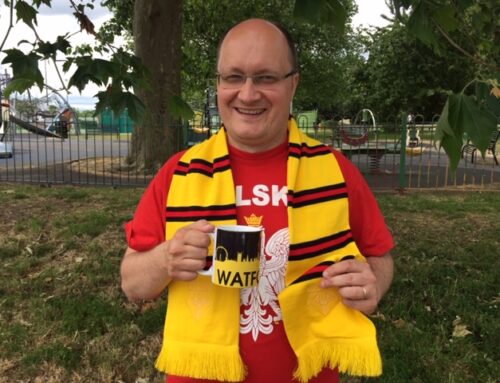“Today, the united states of America is changing its relationship with the peo-ple of Cuba.” This was how President Barack Obama’s speech began that memorable day at noon on December 17, 2014. We were waiting to hear his words all morning long; both his and President Raúl Castro’s speeches had been announced without explanation.
For many, such news was unbelievable after more than five decades of threats and insults, more than 55 years to hear and that such walls were be-ing taken down. We finally witnessed their crumbling and the beginning of a new bridge being built.
What joy, what tears on all sides — though for some, it recalled painful mo-ments and a doubt as to whether this would be a lasting process to more openness. We could see another type of language beginning
to be used.
The two leaders recognized, for example, that the two countries have “pro-found differences, particularly on issues related to national sovereignty, de-mocracy, human rights and foreign policy,” as President
Castro affirmed.
Or as President Obama said: “We can do more to support the Cuban people and promote our values through engagement. After all, these 50 years have shown that isolation has not worked. It’s time for a new approach.”
And so they took this first public step, knowing that the moment of this meet-ing had been nearing for more than a year. It would radically change every-thing from what had happened between the two countries up to now.
People also rejoiced as prisoners of both countries returned home. Four fami-lies on both sides of the Florida Strait were finally reunited, as a husband, son or father came back home. In Cuba, such an act was possible because of almost 17 years of legal battles, campaigns and seeking international sup-port, despite a series of concrete measures taken.
Both leaders surprised many by publically declaring their gratitude to Pope Francis and the Vatican for the role they played in encouraging them to work together for the common good of both peoples. The Holy Father lent his sup-port with a personal letter to both leaders, encouraging them to work to re-solve humanitarian situations, like the release of detainees. In fact, Obama pointed to how the Holy Father’s “moral example shows us the importance of pursuing the world as it should be, rather than simply settling for the world as it is.”
How many fears, and yet how many hopes, were awakened in everyone. There was no lack of opinion on either side after they announced change, nor will there be lack of resistance to it. Some were happy about the possibility for change, while others continue seeing it as impossible and politically incorrect. Prejudices also remain in some, as do doubts — understandably. After dec-ades of attacks and misunderstandings, some wonder how it is possible to trust one another. But the majority of people trust that these new steps to a greater openness are taking us tangibly to a new reality, and this fills people with joy.
Small steps have continued since then. Three rounds of talks in Havana and Washington (in January, February and May) between the official delegations of Cuba and the U.S. have laid down a pathway. Two experienced diplomats oversaw the talks: Josefina Vida, the Cuban Foreign Ministry’s head of North American affairs, and Roberta Jacobson, United States Assistant Secretary of State for Western Hemisphere Affairs.
Change in the rhetoric on both sides announces new times. For example, there have been telephone conversations between the heads of state and their personal meeting during the Summit of the Americas in Panama last April, plus financial benefits for remittances and commercial exchanges. Members of the U.S. Congress have also
visited Cuba to meet with government authorities here to promote closer ties between the two countries during this initial stage of the process of reestab-lishing normalized bilateral relations.
On May 29, President Obama decided to remove Cuba from the list of coun-tries supporting terrorism. There was also the reestablishment of banking services to the Cuban Interests Section in Washington, which allows its nor-mal functioning and the possibility for it to offer consular services to Cuban citizens or foreigners living in the U.S.
Then there are the discrete but sure steps toward opening embassies in Washington and Havana, preparing them to function and ensuring that diplo-mats follow the Vienna Convention on Diplomatic Relations. Finally, both me-dia professionals and the Cuban news agency have been allowed into the White House Press Briefing Room. All these small but sure steps give hope.
All of us outside the circles of power and influence should ask ourselves: can we be sure that it is possible to leave the past behind? How can we see one another as brothers and sisters rather than as enemies? Perhaps these are the most important questions so that the growing bridge that unites us can be built on a solid and firm foundation. This will help us see one another not only as two kindred nations and peoples among whom it is possible to build rela-tionships of brotherhood, but it will also make it possible for Cubans our-selves to look at and accept one another.
As a country and as a people, we Cubans know that among ourselves we are separated and in confrontation. We are divided by our country’s social reality, which did not unite with or include those who thought differently — the great majority of these emigrating to or being exiled to the U.S., which brought about its share of personal, familial and social suffering. We are divided by the constant emigration, which in these last 20 years was almost always ac-companied by economic poverty and the lack of possibilities for personal ful-fillment or family reunification. We are divided by the flawed policies of both governments, which President Obama described, saying that “Neither the American nor Cuban people are well served by a rigid policy that is rooted in events that took place before most of us were born.”
But in order to heal the wounds, we need to reconcile with one another. As Archbishop Dionisio García of Santiago of Cuba and President of the Cuban Conference of Catholic Bishops wrote to Pope Francis, “this reconciliation is needed among our nations and within Cuba itself and among Cubans. It will need to be reconciliation that acknowledges this past made painful by multi-ple causes, and yet accepts it and overcomes it in order to walk in the pre-sent without qualms or hesitation, which dreams and builds a different future, inclusive “of everyone and for the good of everyone.”
Much has happened since December 17, and much still needs to take place — we all know that. There is and will be resistance on both parts, and both sides have already put demands and issues on the discussion table. But even greater is the will and desire to not turn back, to continue breaking bar-riers and opening up space for dialogue and for brotherhood.
This is the dream, which we believe is God’s dream.



Leave A Comment